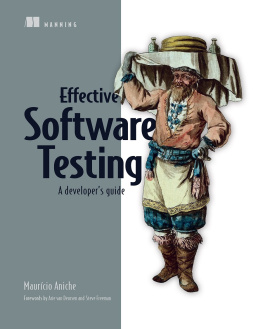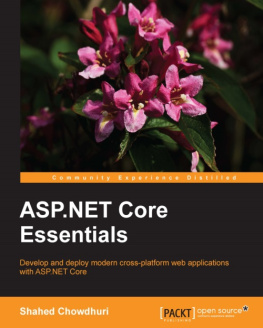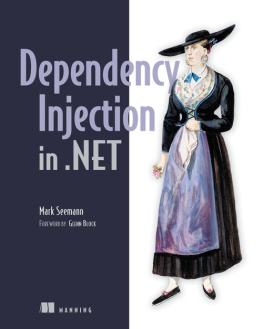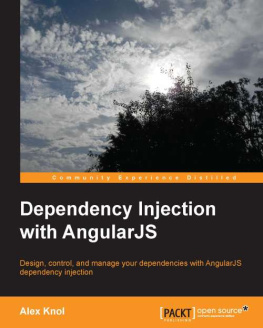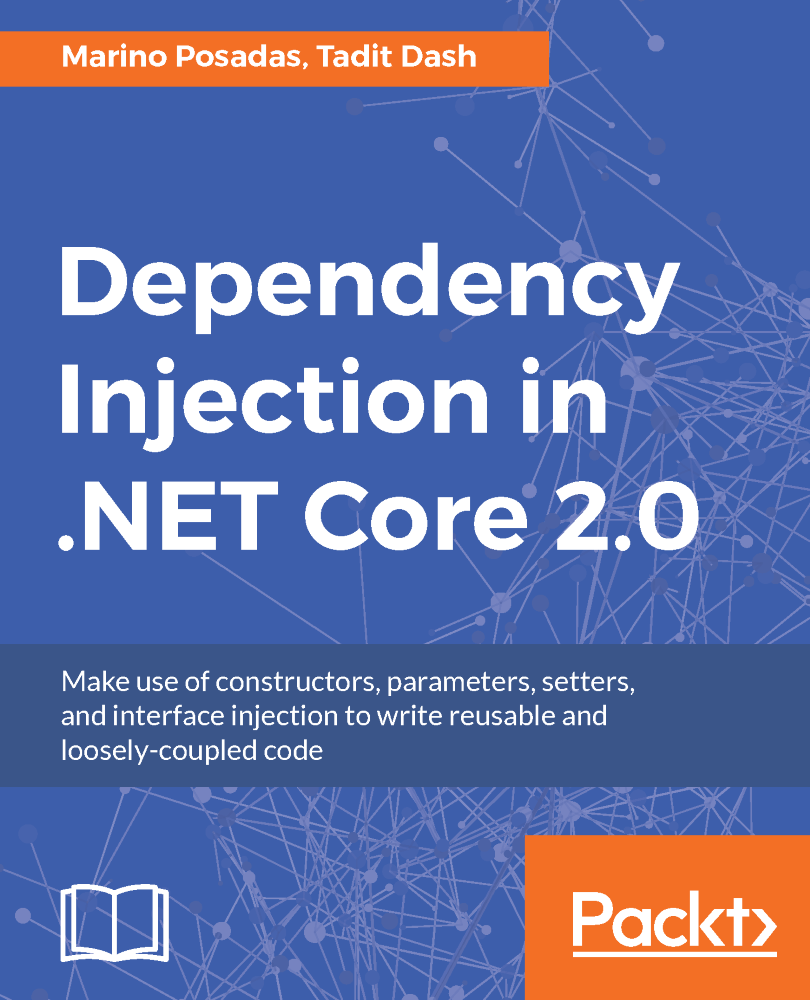Marino Posadas - Dependency Injection in .NET Core 2.0: Make use of constructors, parameters, setters, and interface injection to write reusable and loosely-coupled code
Here you can read online Marino Posadas - Dependency Injection in .NET Core 2.0: Make use of constructors, parameters, setters, and interface injection to write reusable and loosely-coupled code full text of the book (entire story) in english for free. Download pdf and epub, get meaning, cover and reviews about this ebook. year: 2017, publisher: Packt Publishing - ebooks Account, genre: Computer. Description of the work, (preface) as well as reviews are available. Best literature library LitArk.com created for fans of good reading and offers a wide selection of genres:
Romance novel
Science fiction
Adventure
Detective
Science
History
Home and family
Prose
Art
Politics
Computer
Non-fiction
Religion
Business
Children
Humor
Choose a favorite category and find really read worthwhile books. Enjoy immersion in the world of imagination, feel the emotions of the characters or learn something new for yourself, make an fascinating discovery.

- Book:Dependency Injection in .NET Core 2.0: Make use of constructors, parameters, setters, and interface injection to write reusable and loosely-coupled code
- Author:
- Publisher:Packt Publishing - ebooks Account
- Genre:
- Year:2017
- Rating:4 / 5
- Favourites:Add to favourites
- Your mark:
Dependency Injection in .NET Core 2.0: Make use of constructors, parameters, setters, and interface injection to write reusable and loosely-coupled code: summary, description and annotation
We offer to read an annotation, description, summary or preface (depends on what the author of the book "Dependency Injection in .NET Core 2.0: Make use of constructors, parameters, setters, and interface injection to write reusable and loosely-coupled code" wrote himself). If you haven't found the necessary information about the book — write in the comments, we will try to find it.
Inject dependencies and write highly maintainable and flexible code using the new .NET Core DI Engine
About This Book- Identify when to use the constructors, parameters, setters, or Interface Injection, for best results
- Build dependencies not only for MVC within .NET but also for other frontend tools such as Angular
- Create specific components or services to cover discrete and separate pieces of functionality and call them when needed.
C# and .NET developers who have no idea what DI is and would like to understand how to implement it in their applications.
What You Will Learn- Understand the concept of DI and its implications in modern software construction
- Learn how DI is already implemented in todays frameworks.
- Analyze how DI can be used with current software to improve maintainability and scalability.
- Learn the use of DI in .NET Core
- Get used to the possibilities that DI offers the ASP.NET Core developer in different scenarios.
- Learn about good practices and refactoring legacy code.
.NET Core provides more control than ever over web application architectures. A key point of this software architecture is that its based on the use of Dependency Injection as a way to properly implement the Dependency Inversion principle proposed in the SOLID principles established by Robert C. Martin.
With the advent of .NET Core, things have become much simpler with Dependency Injection built into the system. This book aims to give you a profound insight into writing loosely-coupled code using the latest features available in .NET Core. It talks about constructors, parameter, setters, and interface injection, explaining in detail, with the help of examples, which type of injection to use in which situation. It will show you how to implement a class that creates other classes with associated dependencies, also called IoC containers, and then create dependencies for each MVC component of ASP.NET Core. Youll learn to distinguish between IoC containers, the use of Inversion of Control, and DI itself, since DI is just a way of implementing IoC via these containers. Youll also learn how to build dependencies for other frontend tool such as Angular. You will get to use the in-built services offered by .NET Core to create your own custom dependencies.
Towards the end, well talk about some patterns and anti-patterns for Dependency Injection along with some techniques to refactor legacy applications and inject dependencies.
Style and ApproachFilled with examples, this book will take you through various techniques for injecting dependencies into your applications with or without the use of frameworks.
Marino Posadas: author's other books
Who wrote Dependency Injection in .NET Core 2.0: Make use of constructors, parameters, setters, and interface injection to write reusable and loosely-coupled code? Find out the surname, the name of the author of the book and a list of all author's works by series.

